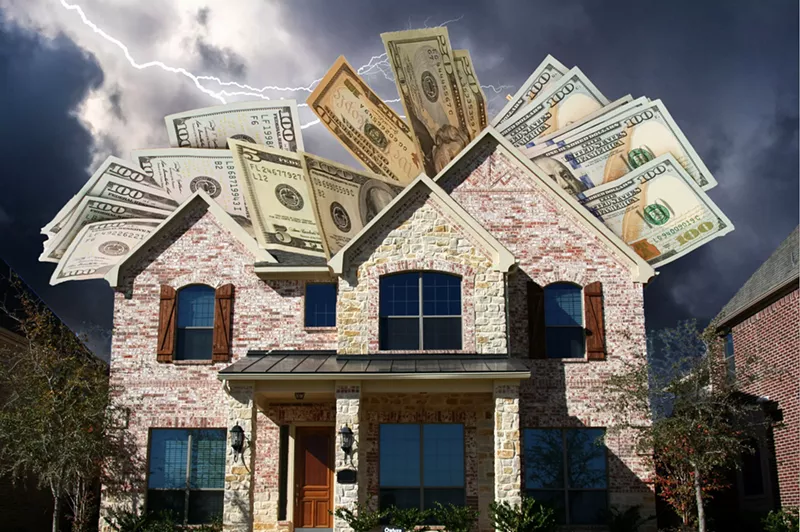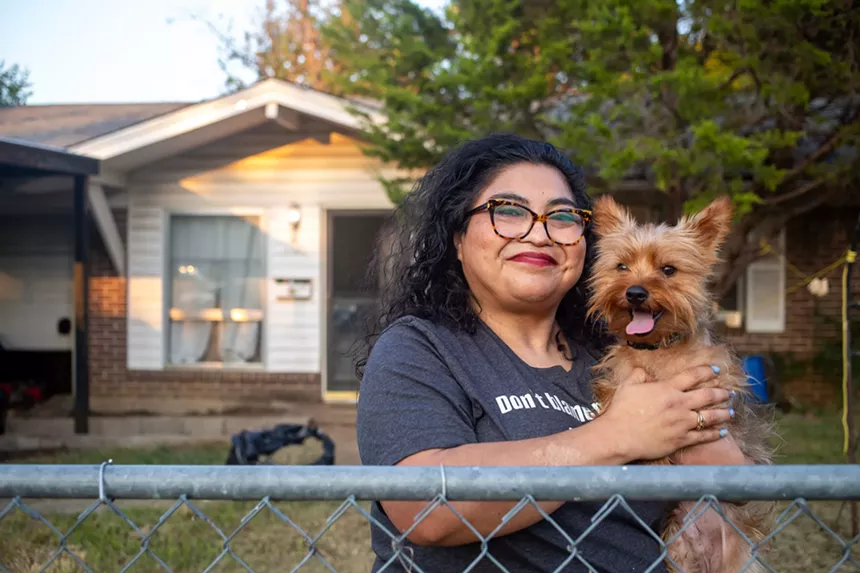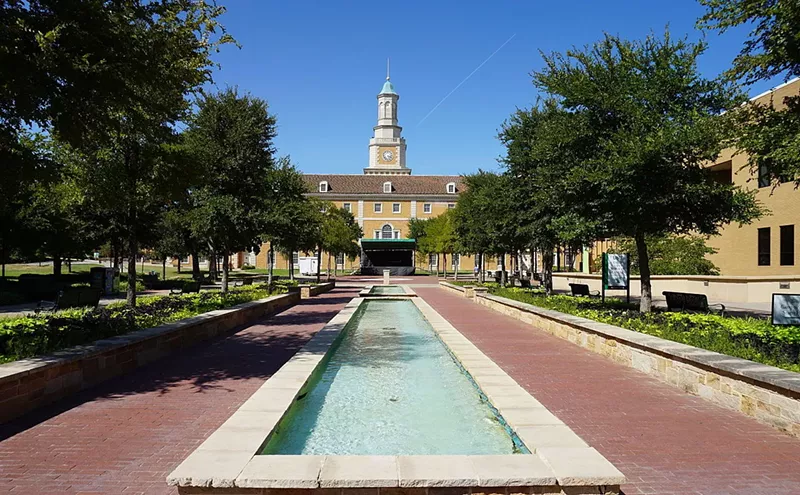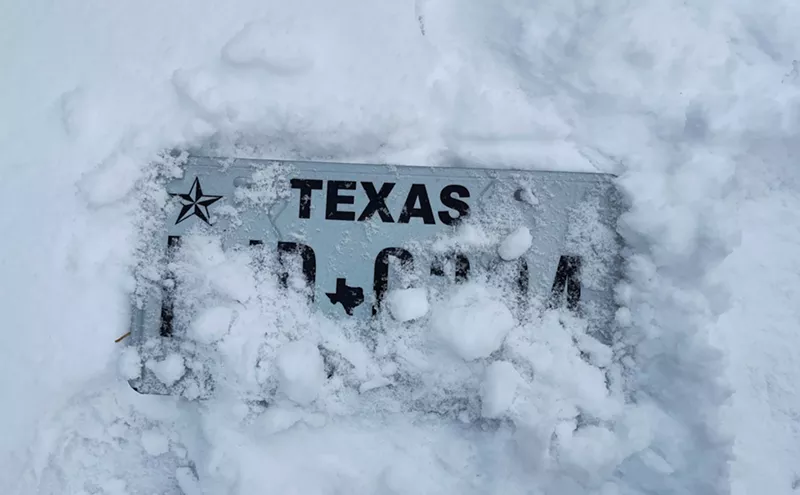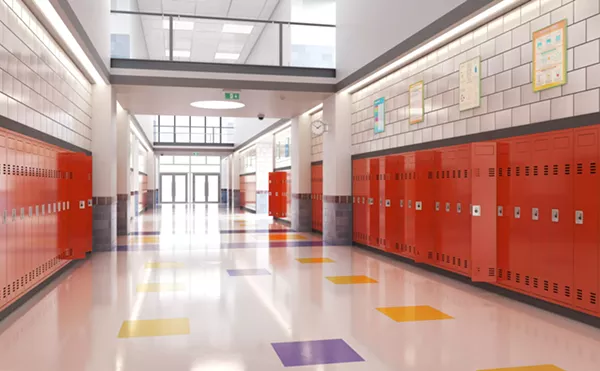“I was convinced it would provide for me in the same way,” she told the Observer, “until I was an old lady sitting on its stump.”
But in 2006, fast-rising home insurance and property taxes forced Santos’ mother to sell the house on Belmont Avenue. They’d lived there for 36 years, and Santos, now 50 and a community organizer, says the move was so painful that she’s never ventured near her old block. She now lives in Pleasant Grove (which she says hasn’t been gentrified “yet”) and, in some ways, she faces a similar situation.
Her home, bought for less than $70,000, is now worth more than $200,000 — and in the last year alone, the cost of her home insurance has tripled.
“I feel guilty even talking to you, because my situation is so much better than what some of my homeowner friends are dealing with,” she said. “But having your insurance and tax triple is still a shock. It kind of makes you wonder what this is gonna look like in five years.”
Since 2018, home insurance rates in Texas have risen over 50%: the largest increase in the country for that period. Texans now pay over $4,000 on average for home insurance. Worse yet, some insurers are refusing to write policies for homes because of the risk associated with hurricane or hail damage. Since insurance is a prerequisite for securing a mortgage, homeowners like Santos and several others interviewed for this story have to come up with the cash or sell their home — an option that’s unthinkable for most homeowners.
“If I sell it, where would I go?” Santos said. “I wouldn’t be able to afford to buy anywhere else.”
Canary in the coal mine
“Insurance is the canary in the coal mine for climate change,” said David Jones, the director of UC Berkeley’s Climate Risk Initiative. Jones, once California’s insurance commissioner, laid out the stakes as clearly and terrifyingly as possible in a Zoom call:“Until we more aggressively and comprehensively transition away from use of fossil fuels and other greenhouse gas emitting industries, temperatures are going to keep rising, and we’re going to have more of these events.”
By “these events” he means hurricanes and, in Dallas, the storms and hail that are scaring off some insurers. Climate scientists have drawn a clear line connecting global warming and the extreme weather that has ravaged Texas throughout a tumultuous 2024, and they say these extremes are our new normal. One expert report says the average annual surface temperature could rise nearly two degrees by 2036, causing more wildfires, droughts and severe storms. Jones says hail and extreme winds are the biggest threats facing Dallas, and he points to an unsettling stat from the Texas Windstorm Insurance Association (TWIA):
The association, which the state created as what Jones calls an “insurer of last resort,” had about 70,000 policyholders two years ago. Now there are roughly 265,000 policyholders and, according to the organization’s actuary, Hurricane Beryl may cost the group half of its catastrophe reserve fundings.
“But having your insurance and tax triple is still a shock. It kind of makes you wonder what this is gonna look like in five years.” – Soraya Santos
tweet this
The rise in TWIA policyholders may be because some insurers are simply refusing to write new policies in Texas.
“I don’t think you’ve seen anyone pulling out of Texas, as they have in California, but you have seen insurers being careful about what they’ll insure,” said David Bolduc, the Texas public insurance counsel.
Bolduc’s job, in his own words, is to “try to keep rates reasonable.” Insurance companies file their increases, and the counsel can challenge the company if they feel the reasons given for the rise are insufficient. Yet Bolduc says his team typically challenges fewer than half of the Increases.
“For the most part, I don’t think we see a lot of bad actors,” he told the Observer. “Most companies don’t want to get a ‘no,’ so they tend to adjust downward — or they convince us it’s actually right.”
To do that, they provide data on the number of claims, the severity of those claims and the cost of their materials.
Dillan Krieg, a research analyst with the housing-focused firm John Burns Research & Consulting, says reinsurance — insurance that is purchased by insurance companies to reduce risk — is another factor contributing to rising prices. But that, too, comes back to climate.
“A lot of insurance companies have catastrophe insurance for themselves,” Krieg said. “They get massive claims that hurt their bottom line and make them struggle, and then reinsurance rates continue to go up.”
This puts more pressure on insurers who, in turn, pass the pressure on to consumers. Even after forking over piles of cash for a high premium, consumers may still discover that their provider won’t pay for some kinds of damage.
“We’re in an age where you need to be more proactive with home maintenance than ever before, because we don’t have the cushion of insurance covering everything,” said Eric Juarez, a Realtor with Great Western Realty. “Now people need reserves saved up, because it might be cheaper to go out of pocket.”
That’s what Ted Cole, an 80-year-old resident of Irving, plans to do if he ever needs major home repairs.
Cole has paid off his home, and he says he has a fairly high risk tolerance. For instance, before it was against the law, he drove around his former stomping grounds in Chicago without car insurance. He estimates he has spent more than $40,000 on home insurance premiums over the years, and in that time, he only filed one claim: He needed a new roof, but even with insurance, he still paid thousands out of pocket.
Now that he has made his final house payment, Cole says he is “out of the game”; he’ll no longer be jumping from carrier to carrier in search of the best rate. He’s “not sitting on a pile of cash,” he says, so he’s happy to be done with the insurance expense.
Still, he knows what people will say: He’s being risky; someone could slip and fall on his lawn, and if they do, he’s screwed. But that’s a risk the born-again Christian says he has decided to take.
“I have a lot of faith in God’s oversight, and the guardian angels, because I think they exist,” he said. “But I know in this world, you can’t ever fully protect yourself no matter what you do.”
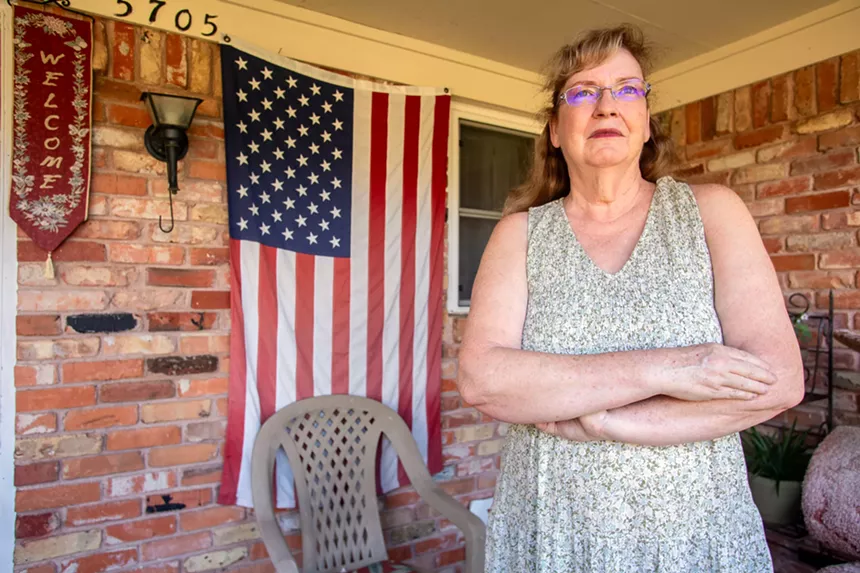
Diane Birdwell has attended several city council and housing commission meetings to oppose Forward Dallas.
Mark Graham
The American Dream
Diane Birdwell is eight months away from being in Cole’s shoes and making her final house payment. But she plans to take a different approach.“I’m always gonna keep insurance,” she said. “I plan to age in place in this home.”
If the 63-year-old had her way, her mother would’ve joined her in the home years ago. However, since the house wasn’t wheelchair-friendly — the front door was just 2 inches too narrow, for example — Birdwell and her family drained their savings, paying nearly $5,000 a month for her mom to live in an assisted living facility.
Insurance came in handy when she needed HVAC and gas line repairs, though both of those costs still reached the thousands of dollars.
Birdwell recently retired from DISD after 25 years as a social studies teacher. As a former military intelligence officer, she was well-suited for the role. Students knew not to mess around in Ms. Birdwell’s class. Yet it was time for a change, she says.
“The state’s at a tipping point with the vouchers,” she told the Observer. “People sound hyperbolic when they say ‘it’s the end of the world as we know it,’ but for teaching, it could be. We were underfunded to begin with.”
That’s not to say she will stop advocating for her fellow teachers. Birdwell has been a longtime member of the Texas State Teachers Association (a labor union affiliated with the National Education Association) and she will still be vocal about what she sees as an untenable situation for Texas educators.
She is also vocal about housing. Birdwell lives in the Buckner Terrace neighborhood, and she has attended several city council and housing commission meetings to oppose Forward Dallas: a plan that could bring multiplexes to her community of single-family homes. The plan is ultimately all about the influx of people moving to Dallas, she argues, and not the people who already live here.
She contends that adding multiplexes would place more burden on her neighborhood’s limited space and scant city services, while neighborhoods in the suburbs or exurbs would continue largely unaffected. And despite the accusations of bias and racism thrown her way, Birdwell remains steadfast in these critiques.
“It’s always in Dallas that the working-class to middle class, white, Black or Hispanic people end up footing the bill,” she said. “People say I’m anti-renter, but I grew up in an apartment complex in Oak Lawn, and I rented until I was 42. The way they’re fighting this is very typical Dallas politics: They can’t get you on facts, so they have to make you sound like a crazy person.”
Like Cole, Birdwell is not sitting on a pile of cash. A common misconception about retirees, she notes, is that they don’t work. To keep up with insurance and tax payments, she plans to work at the State Fair and as a poll worker during elections.
She also has plenty in common with Santos: She could sell her home, but where would she go? The thought reminds her of her mother.
“I could move to a smaller community,” Birdwell said, “but will they have the medical care I need as I age?”
Bee Carrera, a 34-year-old Rowlett resident, is far from retirement. At work, she and her husband are dealing with stagnant wages, as cost-of-living adjustments fall short of what’s needed to cover rising costs such as insurance. She considers herself lucky — so far, many of her friends have been locked out of homeownership altogether.
Even so, she is stressed about the burden created by rising insurance costs. She worked with a broker to scavenge for the lowest possible rate, and even that was outside her budget.
“Insurance is high no matter where you go,” she said the broker told her. “This is the best deal we could find you.”
So now she’s looking for a new job (a process she describes as “pulling teeth”), and her husband, who works in the credit repair industry, is looking for a part-time job where he can work on weeknights and weekends.
Each of these stories underscores how rising insurance costs have become, in the words of Krieg, “another kick in the shins” for homeowners.
“We’re already at an extremely difficult point in homeownership, and this is just another difficulty,” the research analyst said. “The story with insurance is that it’s a growing issue. This is not the end of it, and it’s probably going to get worse before it gets better. It’s hard to see a way out of it unless there are some legal reforms.”
"I know in this world, you can’t ever fully protect yourself no matter what you do.” – Ted Cole
tweet this
What those reforms might be is difficult to say. Krieg is quick to add that there is no “silver bullet,” for this problem. Plus, some attempted reforms — including rate caps and additional oversight from consumer advocacy groups — have played a role in insurers leaving some states. In other words, added regulation means consumers could still lose.
Jones, the former insurance commissioner, says California has some of the strongest insurance regulation in the country, yet a number of factors, including heightened climate risk, are driving insurers away from the state.
“If you pass a law that requires insurers to write insurance, the likelihood is that they’re going to leave the state,” he said.
This doesn’t mean additional regulation — or heightened enforcement of existing regulation — won’t help. But it won’t be a panacea, and local municipalities will need to step up, too.
For instance, Dallas City Council member Chad West wants to expand the city’s home repair program into areas like West Oak Cliff, thereby shoring up at least some of the city’s existing housing stock. And earlier this year, Dallas voters passed a record $82 million bond for housing and homelessness. While that number pales in comparison to some other cities (including Austin, which recently passed a $350 million bond for affordable housing), some of that money could be used to change the makeup of the city’s current rental stock.
“We’re building a lot, but the majority of the new builds are class A, luxury builds,” said Ashley Flores, a senior director at the Child Poverty Action Lab. “This will lead to people being left out.”
The experts interviewed for this story had reams of compelling data, but the numbers don’t capture the depths of emotion a home can evoke. As multiple consumers shared, while insurance is a requirement, it’s also seen as the best or only way to protect your house, your family and everything they mean.
Data can’t capture the story of Santos’ mother, who left her four daughters with her parents in Mexico so she could earn a better life. She ultimately saved enough as a maid to buy a house and bring her children, her parents, her sisters and their families to the U.S. She planted fruit trees, picked pecans and saw her daughter grow up under the shade of “the Giving Tree.”
“I still believe that a home is the culmination of the American dream,” said Santos. “I’m a hardcore militant socialist atheist feminist, and I still believe that. And the other thing about a home is, it’s a part of a neighborhood. The kids on my block, we grew up together. We invented clubs with arcane rules and joined each other’s soccer teams.
"That pull to own one’s home is so strong for some of us. That’s something you don’t really appreciate until you’re older.”

